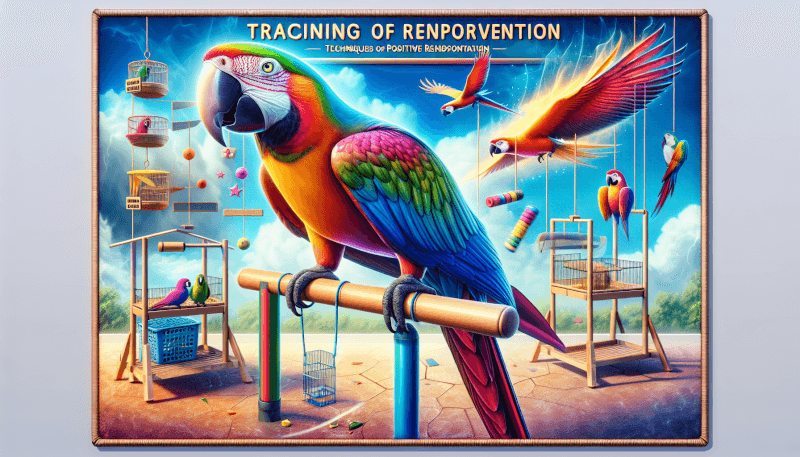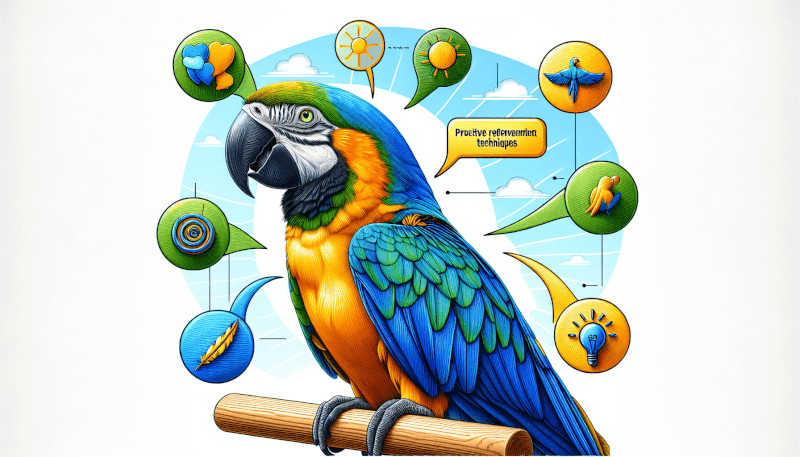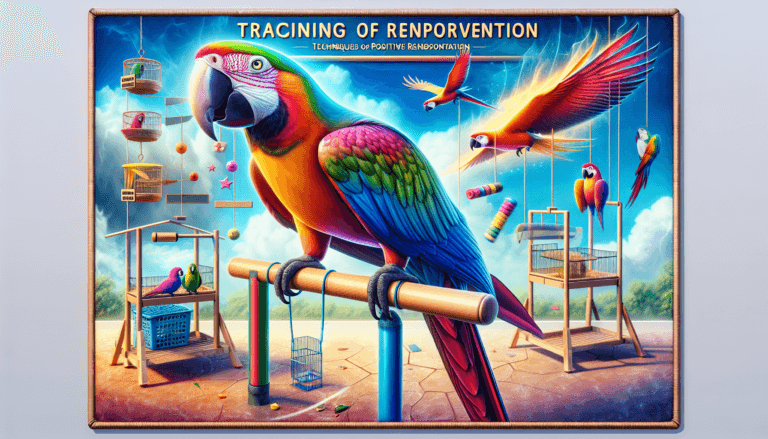So you’ve got yourself a beautiful macaw and you can’t help but wonder, how do I train my feathery friend to talk? Well, fret not! In this article, we will explore some practical tips and techniques to help you successfully teach your macaw to talk. From creating a conducive learning environment to using positive reinforcement, we’ve got you covered. Get ready to unlock the secret to chirping conversations with your delightful macaw companion!

Choosing the Right Macaw
When it comes to choosing the right Macaw, it’s important to do your research and consider the different species available. Macaws come in various sizes and colors, each with its own unique personality traits and temperaments. Some common Macaw species include the Blue and Gold Macaw, Scarlet Macaw, and Green-winged Macaw. By understanding the characteristics of each species, you can make an informed decision that aligns with your lifestyle and preferences.
Ready for Cat Trivia?
Test your knowledge about cats!

Building a Bond with Your Macaw
Building a bond with your Macaw is crucial for successful speech training. Spend quality time together, allowing your Macaw to become comfortable in your presence. Interact with your Macaw through playtime, gentle petting, and talking to them in a calm and friendly tone. Using positive reinforcement, such as treats or praises, whenever your Macaw behaves in a desirable way will reinforce their bond with you.
Establishing trust and respect is also vital. Respect your Macaw’s boundaries and avoid forcing interactions. Allow your Macaw to approach you on its own terms. By creating a loving and trusting environment, you will lay the foundation for effective speech training.

Creating a Learning Environment
To facilitate effective speech training, it’s important to create a conducive learning environment for your Macaw. Reduce distractions by choosing a quiet area in your home where your Macaw can focus. A comfortable training space, such as a stand or perch, will provide your Macaw with a secure and stable platform to learn from. Adequate lighting and ventilation will also contribute to their overall well-being, making them more receptive to training.
Teaching Basic Commands
Start with simple words when teaching your Macaw to talk. Choose a few key words or phrases that you want your Macaw to learn, such as “hello” or “goodbye.” Repeat these words consistently and reinforce them with rewards or treats when your Macaw successfully mimics them. Incorporating hand gestures and visual cues can also help your Macaw associate the words with specific actions or behaviors.

Developing Vocalization Skills
To develop your Macaw’s vocalization skills, expose them to human speech on a regular basis. Talk to your Macaw throughout the day, engaging them in conversation and using repetitive phrases. Call-and-response techniques, where you say a phrase and your Macaw mimics it back to you, can be a fun and effective way to strengthen their speech abilities. Using toys and treats as incentives can also motivate your Macaw to mimic sounds and words.
Advanced Speech Training
Once your Macaw has mastered basic words and phrases, you can move on to more advanced speech training. Expand their vocabulary by introducing new words or phrases gradually. Encourage your Macaw to construct phrases by combining the words they have learned. Regular training sessions, with a focus on repetition and reinforcement, will help solidify their speech skills and further their progress.

Handling Challenges and Frustrations
Training a Macaw to talk can come with challenges and frustrations. It’s important to remain patient and persistent throughout the process. Avoid using negative reinforcement, such as yelling or punishment, as this can create a negative association with training. Instead, focus on positive reinforcement and celebrate small victories along the way.
If you find yourself struggling or encountering difficulties, don’t hesitate to seek professional help. An avian behavior specialist or a qualified parrot trainer can provide guidance and support to overcome any obstacles you may face.
Maintaining a Healthy Macaw
To ensure your Macaw’s overall well-being, it’s important to provide them with a nutritious diet. A variety of fruits, vegetables, grains, and high-quality pellets should form the basis of their diet. Regular exercise, both physical and mental, is crucial for their health and happiness. Encourage your Macaw to engage in flight or play with toys that stimulate their natural instincts. Additionally, monitor your Macaw for any signs of illness, such as changes in behavior, feather plucking, or abnormal droppings, and consult with an avian veterinarian if necessary.

Rewarding and Celebrating Achievements
As your Macaw progresses in their speech training, it’s important to reward their achievements and celebrate their milestones. Offer verbal praise and treats when they successfully mimic a new word or construct a phrase. Celebrate their progress by sharing their talking abilities with family and friends. Your encouragement and positive reinforcement will motivate your Macaw to continue learning and speaking.
Conclusion
Remember that each Macaw is unique, and the journey of training your Macaw to talk should be enjoyed. With research, patience, and a loving bond, you can successfully teach your Macaw to communicate with you through speech. Take the time to understand their species, build a strong bond, and create a conducive learning environment. By using positive reinforcement and consistent training techniques, your Macaw will develop their vocalization skills and bring joy to your home with their ability to talk. Enjoy the process and celebrate the progress along the way!


